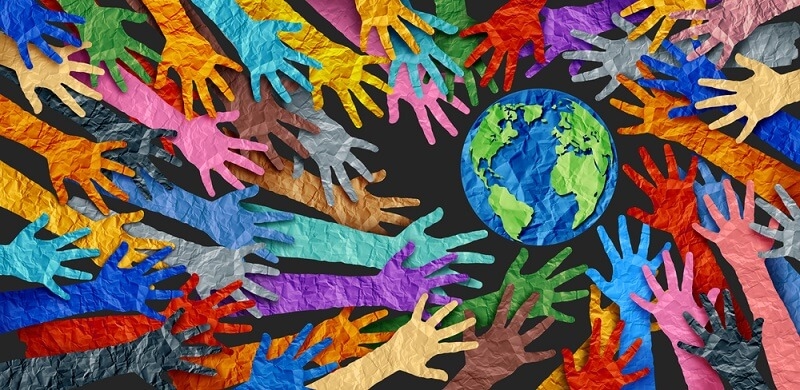
As they look into 2025, cultures around the sector are undergoing an enormous transition, transitioning towards cultural hybridity to realise a global community that is changing to become a more dynamic complex of interrelatedness. This generation represents a sizeable actual pass toward fusion cultures, wherein dialects, practices, and even identities blend to come to be new hybrid paperwork. The notion of being a mix of transnational identities is theoretical and a real-life experience, which occurs in the whole thing, from the floor of artwork and cuisine to garb and virtual affect.
Cultural hybridity refers to integrating elements from different cultures to form new, hybrid forms. It is not simply about colluding traditions but about generations of new cultural forms that genuinely reflect the interconnectivity of our global world. In 2025, cultural hybridity is clearly observable in society, from the fusion of different culinary cultures/beliefs to the blending of other forms of artistic expression, such as music/dance styles.
For example, the emergence of global cultural food fusions/showcases just how cultural groups have been embracing and blending culinary traditions in innovative ways while honoring their traditional cultures. Plant-based eating has become mainstream, with individuals adopting bendy techniques that reduce meat intake while exploring several plant-based cuisines around the area.
Read Next: Ancient Chinese Calligraphy: The Art Preserving Tradition
Fusion cultures emerged in 2025 as a leading culture strain with combined elements. Fusion can encompass food, music, and more. However, it can also encompass clothing, language, and ways of being. The fusion of cultural elements can lead to new forms of expression that resonate with the masses.
In fashion, for example, the fusion of traditional styles with contemporary fashions has led to the emergence of hybrid styles. However, fusion has also raised questions of appropriation, such as when Western-style designers released designs resembling traditional South Asian dress without acknowledging the origin.
Cross-cultural identity is becoming popular in 2025 as increasing numbers of people gain access to diverse cultural heritage. This shift provides distance from rigid cultural barriers and a more fluid understanding of identity. In a virtual age, online contexts allow us to explore and express ourselves beyond narrow cultural identities and to include a cross-cultural identity.
This cross-cultural identity shift is also reflected in the workforce, where organizations are creating new traditions and practices to maintain culture across distances. Virtual coworking experiences, asynchronous collaboration tools, and hybrid event formats are becoming popular practices, showcasing a movement toward a more open and flexible lifestyle.
While personal-cultural identity makes a specialty of the individual, international identification describes societal patterns original with the resource of cultural hybridity. Communities now mirror mixtures of ethnicities, histories, and existence that redefine countrywide and neighborhood identification.
The international identity mix supports Global Cultures 2025 being inclusive, dynamic, and adaptable.

Digital media increases the velocity with which cultural expertise and practices are exchanged and increases hybridization.
Media share cultural hybridity; in addition, they intervene in the manner of making blended cultures and publish cultural identities.
Food is a fundamental route of cultural hybridity expressed in cultures worldwide, 2025.
Culinary hybridity offers more approachable, everyday access to fusion cultures, because humans can experience international cultures in taste.
Recommended Article??????: How Food Shapes Cultural Identity: A Global Culinary Journey
Fashion exemplifies how global cultures in 2025 evolve through cultural hybridity. Designers and clients are increasingly mixing traditional elements with modern-day traits.
Fusion fashion no longer effectively expresses private identification but indicates participation in a broader worldwide identification blend.
The arts provide an entry point into the revolutionary possibilities of the Worldwide Cultures 2025.
Artistic hybridity strengthens cross-cultural knowledge and cultivates appreciation for global diversity.
Language is a central element of cross-cultural identity and the worldwide identity combo.
Language evolution highlights how international cultures 2025 are dwelling, adaptive systems.
Education plays a crucial role in fostering an interest in cultural hybridity.
Destiny generations will continue to embrace and increase fusion cultures and flow-cultural information through training.
Cities are bodily manifestations of global cultures 2025.
Urban hybridity showcases the cloth intersection of globalized identities, assorted districts in which cultural pluralism fits nearly without distinction.
Workplaces are increasingly replicating worldwide cultural hybridity.
Cross-cultural competency may be critical for experts navigating the interconnected global landscape of worldwide cultures in 2025.
Though it is enriching, cultural hybridity can put people in difficult situations.
To confront these challenges would imply some work in the fields of education, communication, and contextual insight.
Globalization creates a stronger rise of fusion cultures and cross-cultural identities.
Digital tools make Global Cultures 2025 available to everyone, everywhere, promoting inclusion and innovation.
Learn More: Influence of Ancient Civilizations on Modern Global Cultures
Cultures of the world 2025 welcomes the entirety and involves an acceptance of the splendors and intricacies of cultural hybridity, fusion cultures, cross-cultural identification, and the world blend of identity. Societies can thrive creatively and socially when we embrace variety, entertain new ideas, and are durable. These global dispositions present a world in which ancestry and modernism co-exist to better create rich, more relatable experiences for people and communities daily.
This content was created by AI